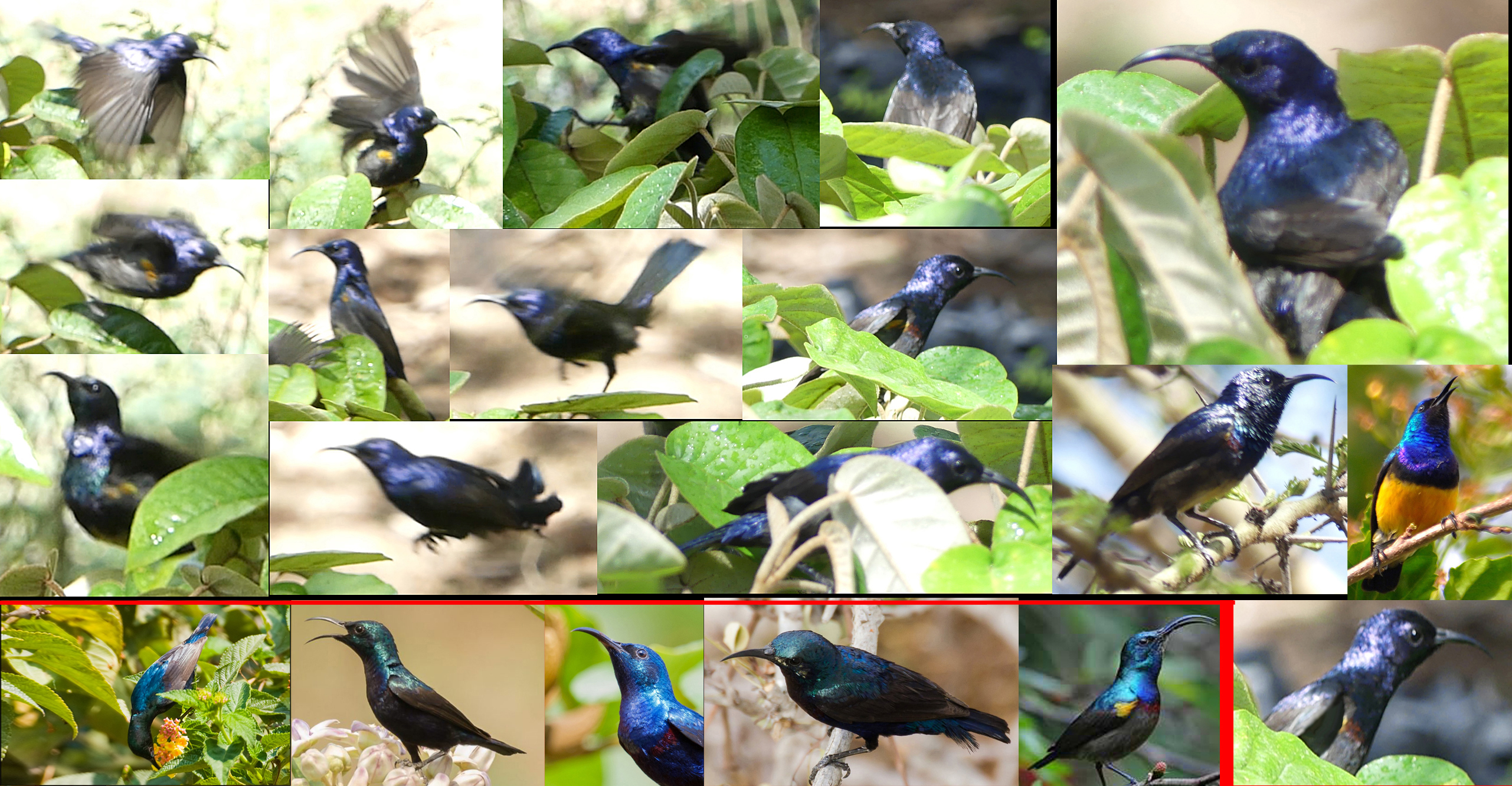From: Brian Finch <birdfinch@gmail.com>
Date: 2018-02-28 21:29
Subject: THE SUNBIRD THAT JUST DOESN’T EXIST.
Dear All,
Sorry for the delay in coming back on the issue of the strange Sunbird
from the nursery near East Gate in NNP, and thanks so much to all
those who lent their ideas on the ID and I will go all through these
later.
Firstly we have to look at the features on the bird.
1. Glossy bluish upperparts reflecting green at different angles.
2. Fairly stoutish bill.
3. Greener on breast.
4. Indication of maroon on sides of collar.
5. Bright orange pectoral tufts.
6. Greyish olive-yellow lower belly.
7. Bird appears in transition moult.
The contenders…. Males of Variable and Marico Sunbirds.
1. Marico is very green above not showing any deep blue iridescence.
Variable is green above with a blue iridescence but never deep blue.
2. Marico has a comparably stout bill.
Variable has a shorter and weaker bill.
3. Marico has a green breast with blue iridescence.
Variable has a bluer breast with purple iridescence and pectoral band.
4. Marico has a maroon collar across the breast.
Variable has a blue-purple lower edge to breast.
5. Marico has no pectoral tufts whatsoever.
Variable has orange-yellow pectoral tufts.
6/7. Marico has greyish olive-yellow belly before moulting into adult plumage.
Variable has uniform pale-yellow to bright yellow belly.
In the unlikely option of a hybrid between the two, the plumage is
looking too “clean” to support a mixture of genes. The dominant deep
blue colour occurs on neither species, and would not result if the
colours were mixed.
The options that came in; were an accident having fallen into a
chemical. If this had happened, for the bird to be entirely changed
with a chemical colouring, it would have had to have been totally
immersed, including eyes and nostrils, and the chance of a bird being
100% covered in a chemical, the feathers would have become matted, and
such an incident would not permit survival. This bird was hyperactive
and very healthy. The feathers were clean and lustrous.
That Variable is called Variable because that is what it is. True, but
it only affects the breast from white, through to yellow, bright
yellow and rich orange-yellow below the breast. Even an aberration
couldn’t explain the maroon on the sides of the chest, or the rather
stout bill.
An aberrant Marico. Even with the colour shift, there has to be
something else to give it yellow pectoral tufts, which are never found
on Marico.
Moulting Tacazze. We had Bronze Sunbird bathing with it, and it was
much larger, and of course Tacazze is much the same size and build as
Bronze. With regards to the maroon on the breast, it is only in the
area of a pectoral band, if it were anything to do with the Tacazze’s
magenta coming through it would be expected elsewhere on the
underparts, and it allows for a large colour shift on the upperparts,
and of course does not explain the yellow pectoral tufts.
So I went through every possibility in East Africa and came up with
nothing, then increased the search throughout sub-saharan Africa again
a blank. Then I looked up any purplish Sunbirds from the rest of the
old world.
It’s really exciting finding interesting things but when you think you
know the answer you can look really stupid.
There is a species that fulfils all points 1-7 seen on the bird, and
that is the Purple Sunbird of India. If you look at the bottom row of
the sunbird plate, apart from the farthest right which is the East
Gate Nursery Sunbird, this is the male Purple Sunbird.
IF there is a possibility that this is a Purple Sunbird, it would have
to be an escapee brought in by a home-sick Indian. So whilst this
might seem ridiculous, an Indian Sunbird species being found in Kenya,
there is a sting in the tail on the Sunbird Plate, the nice image of
the Variable Sunbird was recently photographed in Gir National Park,
Gujurati, India!!!
Best to all
Brian

